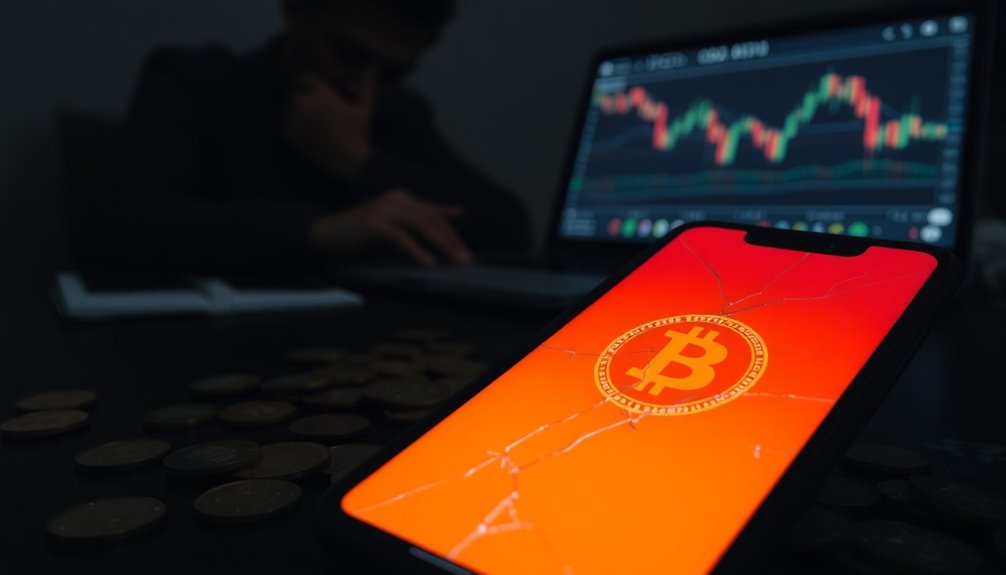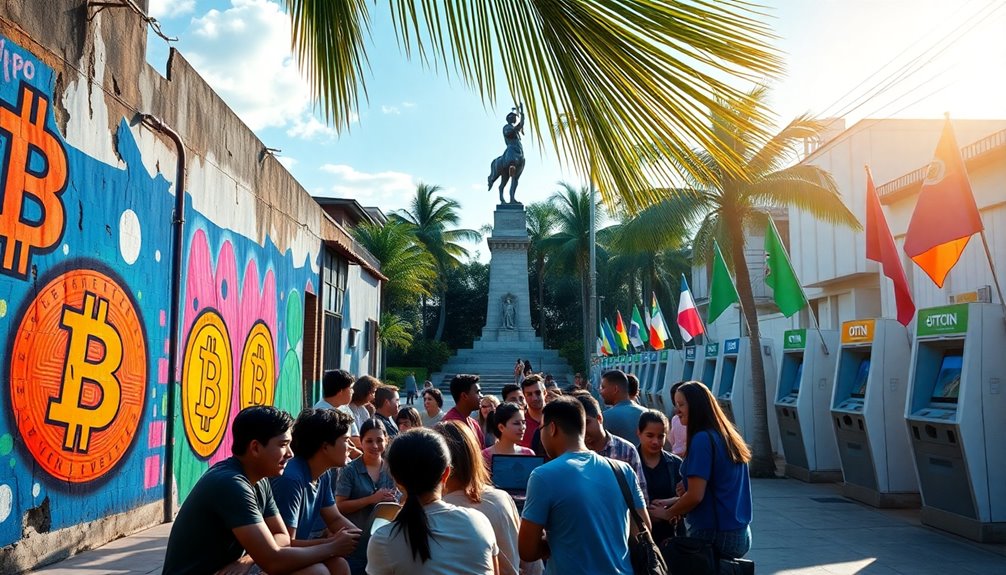You've likely noticed the alarming 48% drop in Bitcoin retail activity lately. This shift isn't just a blip; it reflects deeper market trends. Individual investors are more cautious than ever, especially with Bitcoin struggling to break that elusive $100,000 mark. But what's really driving this change? Understanding the key factors behind this decline could reshape how you view the current market landscape. The answers might surprise you.

As Bitcoin's price hovers above $100,000, retail activity has surprisingly declined to its lowest levels since 2021. You might expect that soaring prices would entice more individual investors, but the reality paints a different picture. Retail Bitcoin transactions under $10,000 have plummeted, showing a 19.34% drop in on-chain activity, indicating that many are exercising caution rather than jumping into the fray. This decline suggests that individual investors are wary, perhaps waiting for more stability before committing their funds.
Historically, you've seen retail participation surge during volatile price swings, but this time is different. Even though Google Trends shows heightened interest in Bitcoin compared to last year, it's not as robust as you'd think given the current price. Instead of a consistent influx of retail transactions, you're witnessing peaks followed by sharp declines. Events like the Trump meme coin launch momentarily spike interest, but they don't lead to sustained engagement, leaving many to question the overall health of retail activity. Additionally, search interest reflects sporadic engagement rather than sustained participation.
One major factor at play is Bitcoin's struggle to break that psychological $100,000 barrier. This uncertainty affects how investors perceive the market's stability. Since November, Bitcoin has been in a consolidation phase, with price action constricting below that critical threshold. As a result, many retail investors seem hesitant to dive in, opting instead to watch from the sidelines.
Moreover, the market dynamics have shifted, with institutional investors now taking the lead. While retail participation wanes, institutions are likely driving the market and influencing price movements. This change could be a double-edged sword: while institutional backing may provide some stability, it also creates a disconnect between retail sentiment and market trends.
Looking ahead, analysts believe that a breakout above $100,000 could rekindle retail interest and buying pressure. If Bitcoin manages to establish a stable market foundation, you might see more retail investors reentering the space as prices gain momentum. Historical patterns suggest that as Bitcoin's price rises, retail enthusiasm often follows suit.









